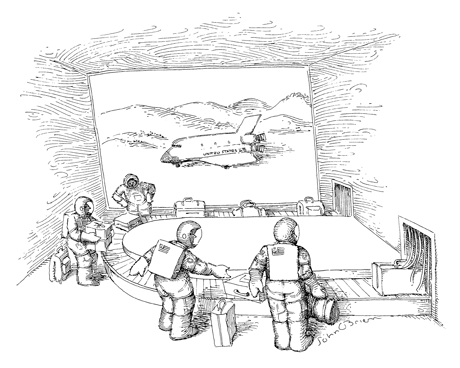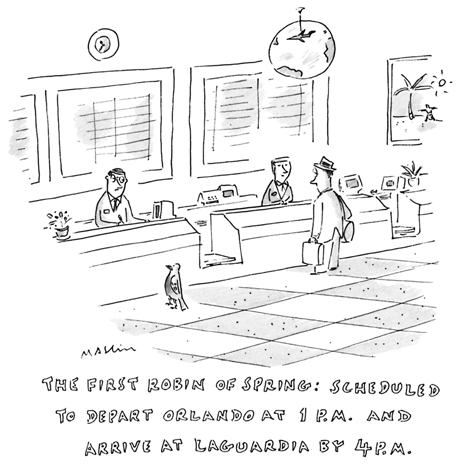
When rolling out their
“Cabin OK” initiative on June 9th, IATA promised again to
solve what they felt was a pressing problem throughout the industry: The
lack of space for cabin baggage.
The initiative “proposes the introduction
of a cabin bag size for storage in overhead compartments as well as under
the seat that would be accepted by participating airlines, for aircraft
of over 120 seats.
“All bags approved as size-compliant
will bear an IATA Cabin OK logo which will enable the staff of participating
airlines to recognize them.’
Before going much further we must say up
front that the IATA website currently carries these words about Cabin
Bag OK:
“IATA has paused rollout of Cabin
OK to reassess the initiative.”
Here is what happened.
What’s felt to be an annoying and
time-consuming hassle by most affected travelers also has a number of
legal, operational, and safety-related ramifications the traveling public
might not realize.
Shifting Lithium Below Decks?
 Because
of the high fire risk associated with some types of Lithium batteries
and Lithium-battery powered gadgets, all spare Lithium batteries not installed
in devices must be carried in carry-on baggage, as well as some devices
such as e-cigarettes prone to start fires. Because
of the high fire risk associated with some types of Lithium batteries
and Lithium-battery powered gadgets, all spare Lithium batteries not installed
in devices must be carried in carry-on baggage, as well as some devices
such as e-cigarettes prone to start fires.
The rationale behind this is that the cabin
crew can more easily control fires in the aircraft cabin than they could
in the inaccessible cargo holds.
This means if baggage an air passenger intended
as carry-on is loaded in the cargo hold for want of sufficient space in
the overhead baggage bins, such baggage may not be in compliance with
legal requirements applicable to the transport of certain dangerous goods
by passengers.
IATA’s rather unilateral measure was
to uniformly reduce the maximum recommended size of cabin-baggage and
mark carry-ons meeting their new specifications as “Cabin OK.”
IATA Word
Up
 “The
development of an agreed optimal cabin bag size will bring common sense
and order to the problem of differing sizes for carry-on bags. We know
the current situation can be frustrating for passengers. This work will
help to iron out inconsistencies and lead to an improved passenger experience,”
said Tom Windmuller, IATA’s senior vice president for Airport, Passenger,
Cargo, and Security, in an IATA press release June 9th. “The
development of an agreed optimal cabin bag size will bring common sense
and order to the problem of differing sizes for carry-on bags. We know
the current situation can be frustrating for passengers. This work will
help to iron out inconsistencies and lead to an improved passenger experience,”
said Tom Windmuller, IATA’s senior vice president for Airport, Passenger,
Cargo, and Security, in an IATA press release June 9th.
“Working with airline members of IATA
and aircraft manufacturers, an optimum size guideline for carry-on bags
has been agreed that will make the best use of cabin storage space. A
size of 55 x 35 x 20 cm (or 21.5 x 13.5 x 7.5 inches) means that theoretically
everyone should have a chance to store their carry-on bags on board aircraft
of 120 seats or larger.”
Furor Erupted
While IATA “has worked with airline
members of IATA and aircraft manufacturers,” they have apparently
forgotten to consider what the passenger might actually think.
As mentioned at the top, a storm of consumers
and consumer advocacy organizations predominantly in North America made
IATA reconsider quickly and officially “pause” their “Cabin
OK” initiative June 17th, following a “clarification”
on June 12th in the turmoil of negative feedback—such as Sen. Bob
Menendez of NJ, who called the initiative “another industry ploy
related to baggage fees.”
Reality Check
 While
such a ploy can be ruled out as well as any association between IATA and
the manufacturers of hand luggage, the problem at hand is real enough: While
such a ploy can be ruled out as well as any association between IATA and
the manufacturers of hand luggage, the problem at hand is real enough:
There is insufficient space in the overhead
bins to accommodate the baggage of all economy travelers.
The “maximum size carry-ons”
of currently 55x45x25 cm (22x14x9in) are less of a problem than the increasingly
popular backpacks—often with attachments of various forms and sizes—because
irregularly shaped baggage requires more space. Furthermore, airlines
in the last years have squeezed more and more seats into aircrafts, increasing
777 and 747 economy-class configurations to 10 seats per row instead of
8 or 9 as before.
The issue is particularly serious with some
LCC’s flying in all-economy configurations such as Ryanair (FR),
although most of these LCC’s are not even IATA members and are driven
by changed baggage policies of airlines who now charge even for the first
checked-in bag. They also reduce overall baggage allowances, and many
are moving towards the trend of airlines’ and airports’ “ancillary
revenue.” Bags with duty-free merchandise usually go on top of the
normal baggage allowance.
On some flights, the problem is aggravated
by winter coats, which passengers can no longer keep on in narrow seats
and overheated cabins.
Families with children making use of the
additional allowances for infants and toddlers needs, especially where
infants up to two years fly without their own seat, also reduce available
space.
Reducing the recommended baggage size by
38 percent, as proposed by IATA, is not a solution. The outcry of the
flying public against IATA’s well-meant but poorly researched Cabin
Bag initiative will also serve as a wake-up call to IATA as well as some
of their member carriers.
Some airlines, such as Thai Airways (TG),
have upped the check-in baggage allowance to 30kg in economy and 8kg for
carry-on; and customer loyalty at TG is far above industry levels.
Boeing Steps Up
A better way to assist in resolving the
issues has been brought forward by aircraft manufacturer Boeing, who changed
the configuration of the overhead luggage bins on its newest planes in
a way that allows current maximum-sized rollaboard suitcases to be stowed
sideways.
Some journalists have worried that passengers
in first and business class, being boarded first and allowed more baggage,
take away luggage bin space for Aunt Martha flying in economy.
But not to worry; the reduced number of
seats in first and economy makes for plenty of overhead luggage space—even
on single-aisle commuter aircraft, 2-2 instead of 3-3 configurations considerably
ease the pressure.
Giving Pause
In its announcement to pause the implementation
of “Cabin OK,” IATA’s Tom Windmuller admits, “this
is clearly an issue that is close to the heart of travelers. We need to
get it right. Today we are pausing the rollout and launching a comprehensive
reassessment of the Cabin OK program.”
While that is encouraging, the last sentence
of IATA’s press release contradicts what Mr. Windmuller has said:
“Cabin OK is a guideline for an optimally
sized cabin bag, not an industry standard. Cabin OK does not seek to define
a maximum size for carry-on bags, which is something each airline does
individually. And no consumer will be forced into buying a new bag as
a result of this voluntary initiative.”
If IATA member and non-member airlines follow
the recommendations of “Cabin OK,” the passenger will either
have to buy a new bag for the purpose of carry-on or have to stay home.
For whatever its worth, FT would
like to make a suggestion to help resolve the problem:
Everyone involved in the “Cabin OK”
initiative at IATA should make his or her business trips in the next 12
months in economy class only. In this way they can gather important intelligence
without additional, costly task forces and be able to contribute firsthand
experience of the issue at hand.
Up, Up, & Away!
Jens
|





